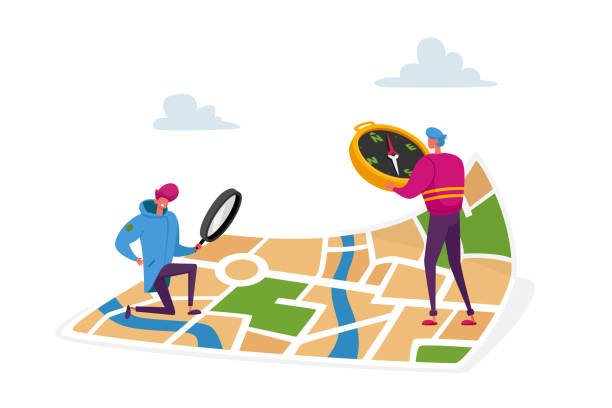Find Rural and Urban Settlement Geography Grade 12 Notes for revision studies. The notes on this page were compiled by various Geography subject teachers in South Africa. The notes are for 2023, 2022, 2021, and 2020.
Rural and urban settlement geography is a branch of geography that focuses on the study of the spatial distribution, organization, and development of human settlements. In grade 12, you will typically learn about the characteristics, differences, and similarities between rural and urban settlements.
Here are some key topics:
- Definition and Characteristics of Rural and Urban Settlements: You will learn about the basic definitions of rural and urban settlements, as well as their distinguishing features, such as population size, density, land use, economic activities, social organization, and physical environment.
- Location and Site Factors: You will study the factors that determine the location and site of rural and urban settlements, including topography, climate, water supply, transportation, communication, and proximity to resources.
- Land Use and Housing: You will examine the different types of land use and housing patterns found in rural and urban settlements, such as agricultural land, residential areas, industrial zones, and commercial districts. You will also explore the factors that influence land use and housing decisions, such as zoning regulations, cultural norms, and economic conditions.
- Economic Activities and Services: You will explore the various economic activities and services that exist in rural and urban settlements, including farming, mining, manufacturing, trade, finance, and tourism. You will also analyze the factors that contribute to the growth and decline of these activities and services.
- Social Organization and Infrastructure: You will investigate the social organization and infrastructure of rural and urban settlements, including governance, community development, education, healthcare, and transportation. You will also assess the challenges and opportunities faced by rural and urban communities in providing these services.
- Environmental Issues and Sustainability: You will examine the environmental issues and sustainability challenges associated with rural and urban settlements, such as land degradation, pollution, climate change, and resource depletion. You will also explore the strategies and policies that can promote sustainable development in rural and urban areas.
Rural and Urban Settlement Geography Grade 12 Notes PDF download
Rural and urban settlement geography in grade 12 focuses on the study of the spatial distribution, organization, and development of human settlements. By the end of the course, you should have a solid understanding of the similarities and differences between rural and urban settlements, as well as the factors that shape their growth and development.
What is a Settlement?
Settlement: An Introduction
In the field of geography, a settlement is defined as a grouping of people, buildings, communication networks, and activities that function as a single unified system on a daily basis. This definition encompasses a wide range of human settlements, including rural villages, small towns, suburban areas, and large cities.
People
The people who live in a settlement are an essential component of its social and cultural fabric. Settlements can vary greatly in size and population, from a few hundred people in a rural village to millions in a megacity. The population of a settlement can influence its economic, political, and environmental dynamics, and it can also shape its social structure, values, and beliefs.
Buildings
Buildings are the physical structures that make up a settlement’s built environment. They can range from traditional mud huts and thatched-roof houses to modern skyscrapers and high-rise apartments. The type of buildings in a settlement can reflect its historical, cultural, and economic context, and they can also influence its energy consumption, urban form, and aesthetics.
Communication Networks
Communication networks are the channels through which information, goods, and people flow within and between settlements. These networks can include roads, railways, airports, ports, and digital infrastructure such as the internet and mobile phones. The efficiency and accessibility of a settlement’s communication networks can have significant impacts on its economic development, social integration, and environmental sustainability.
Activities
Activities refer to the various economic, social, and cultural practices that take place in a settlement. These can include farming, mining, manufacturing, trade, finance, education, healthcare, entertainment, and religion. The diversity and complexity of a settlement’s activities can reflect its economic specialization, social diversity, and cultural heritage, and they can also shape its spatial organization and urban dynamics.
Settlements are complex and dynamic systems that reflect the interplay of people, buildings, communication networks, and activities. Understanding the characteristics and functions of settlements is essential for analyzing the spatial patterns, social dynamics, and environmental impacts of human activities, and for developing sustainable and equitable policies and practices that promote human well-being and planetary health.
How are settlements classified according to size?
Settlements can be classified based on their size and population. The classification of settlements can vary depending on the country or region, but there are some common categories used worldwide. The following are the common classifications of settlements according to their size:
RURAL
- Isolated Farmsteads: Isolated farmsteads are settlements that consist of a single farm or homestead, located in a remote rural area. These settlements are typically isolated and do not have any other nearby settlements.
- Hamlet: Hamlets are small settlements that typically have a population of fewer than 100 people. They are typically located in rural areas and may have a few shops or services, but they lack the amenities and facilities of larger settlements.
- Village: Villages are larger than hamlets and typically have a population of several hundred to a few thousand people. They may have a variety of services and amenities, such as schools, shops, healthcare facilities, and community centers. Villages are usually located in rural areas and serve as hubs for nearby farms and smaller settlements.
URBAN
- Town: Towns are larger settlements than villages and typically have a population of several thousand to tens of thousands of people. They are usually located in rural or suburban areas and may serve as commercial, administrative, or cultural centers for their region. Towns typically have a more diverse economy and a wider range of services and amenities than villages.
- City: Cities are the largest type of settlement and typically have a population of tens of thousands to millions of people. They are usually located in urban areas and serve as centers for business, finance, culture, and politics. Cities have a diverse economy and a wide range of services and amenities, such as universities, hospitals, museums, and shopping centers.
- Metropolis: Metropolises are the largest and most influential cities in a region or country. They typically have a population of millions of people and serve as centers for global trade, finance, and culture. Metropolises have a diverse and complex economy, a high level of infrastructure and services, and a significant impact on regional and national development.
- Conurbation: A conurbation is a large urban area that consists of several adjacent cities or towns. Conurbations typically have a population of millions of people and a high level of economic and cultural integration. They may also have complex transportation and communication networks that facilitate the movement of people and goods within and between settlements.
- Megalopolis: A megalopolis is a very large urban region that consists of several adjacent conurbations. Megalopolises typically have a population of tens of millions of people and are characterized by high levels of economic and cultural integration. They may also have significant environmental and social challenges related to their size and complexity.
Settlements can be classified based on their size and population, with rural settlements ranging from isolated farmsteads to villages and towns, and urban settlements ranging from cities to metropolises, conurbations, and megalopolises.
How do you distinguish between urban and rural settlements?
Urban and rural settlements can be distinguished from each other based on several key characteristics. Some of the main differences between urban and rural settlements are:
- Population density: Urban settlements are characterized by high population density, with many people living in a relatively small area. Rural settlements, on the other hand, have a lower population density, with fewer people living in a larger area.
- Land use: Urban settlements are typically characterized by a high degree of land use intensity, with buildings, roads, and other infrastructure covering a significant portion of the land. Rural settlements, on the other hand, have a lower degree of land use intensity, with larger areas of land used for agriculture, forestry, or other natural resource-based activities.
- Economic activities: Urban settlements are typically centers of commerce, trade, and industry, with a wide range of economic activities and services available. Rural settlements, on the other hand, are more likely to be based on agriculture, forestry, or other natural resource-based activities.
- Infrastructure: Urban settlements generally have a higher level of infrastructure, such as roads, public transport, and utilities, than rural settlements. This is because the high population density in urban areas makes it more efficient and cost-effective to provide these services to a larger number of people. Rural settlements often have less infrastructure, and services such as water and electricity may be provided by individual households rather than by a centralized system.
- Social characteristics: Urban settlements are typically characterized by a more diverse population, with people from different ethnic and cultural backgrounds living in close proximity to each other. Rural settlements, on the other hand, are often more homogenous, with a more uniform population.
- Environmental characteristics: Urban settlements are more likely to be affected by environmental problems such as air pollution, noise pollution, and waste management issues, due to the higher density of people and infrastructure. Rural settlements, on the other hand, are more likely to be affected by natural hazards such as floods, wildfires, and landslides.
The main differences between urban and rural settlements are population density, land use, economic activities, infrastructure, social characteristics, and environmental characteristics. While these characteristics can help distinguish between urban and rural settlements, it is important to note that there can be significant variation within each category, and some settlements may exhibit characteristics of both urban and rural areas.
Why are dispersed settlements better from an economic point of view, as compared to nucleated?
From an economic point of view, dispersed settlements can have some advantages over nucleated settlements. Here is a comparison in a table format:
| Characteristics | Dispersed Settlements | Nucleated Settlements |
|---|---|---|
| Land use | Spread out over a larger area, allowing for more agriculture and natural resource-based activities | Concentrated in a smaller area, limiting the amount of land available for agriculture and natural resource-based activities |
| Transportation | Less congestion and lower transportation costs as homes and businesses are spread out | More congestion and higher transportation costs as homes and businesses are concentrated in a smaller area |
| Infrastructure | Lower infrastructure costs as homes and businesses are spread out, reducing the need for expensive centralized services | Higher infrastructure costs as homes and businesses are concentrated, r equiring more centralized services |
| Economic Diversity | Greater economic diversity as different types of businesses and industries can be spread out over a larger area | Limited economic diversity as businesses and industries tend to cluster around the town or city center |
| Cost of Living | Lower cost of living due to less competition for housing and resources | Higher cost of living due to greater competition for housing and resources |
| Social Interaction | Less social interaction due to greater physical distance between homes and businesses | Greater social interaction due to the concentration of homes and businesses in a smaller area |
Dispersed settlements can have some advantages from an economic point of view, such as more land for agriculture and natural resource-based activities, lower transportation and infrastructure costs, greater economic diversity, and lower cost of living. However, they may also have some disadvantages, such as less social interaction and a greater need for personal transportation. Ultimately, the optimal settlement pattern depends on a variety of factors, including geography, climate, culture, and economic goals.
Notes
- People and Places – Processes and Spatial Patterns:
- Sustainability-related strategies and urban settlements
- Structures and Patterns of Urban Settlements, Human-Environment Interactions and Sustainability Strategies.
- Transport and trade – the importance and challenges of the informal sector
- Globalisation and trade: food security in southern Africa
Rural Settlement Notes:
Learning about Rural Settlement
Rural and urban settlements Summary Notes:

View all #Geography-Grade 12 Study Resources
We have compiled great resources for Geography Grade 12 students in one place. Find all Question Papers, Notes, Previous Tests, Annual Teaching Plans, and CAPS Documents.





